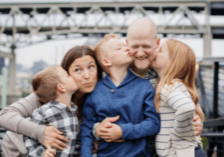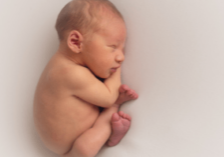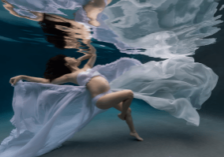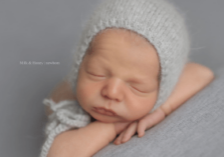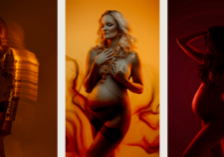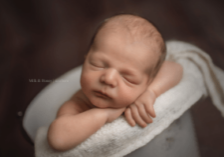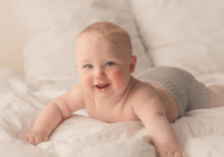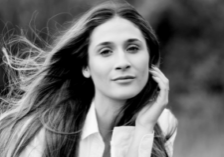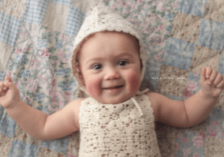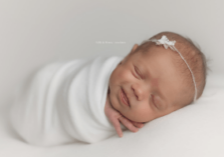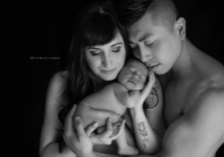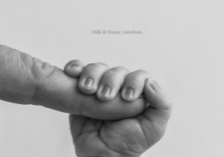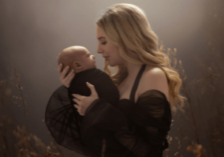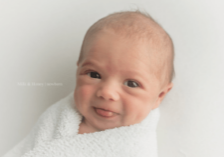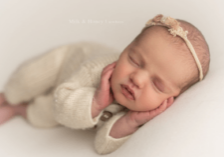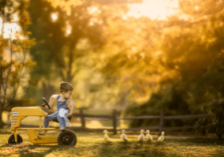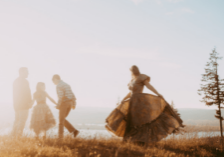The Honest Lens: Capturing the Beauty of the Everyday with Documentary Photographer Amy Dangerfield
As creatives, we spend too much time focusing on “should”. We tell ourselves, “This is the way my photos should look, and this is the way my business should run,” etc. But what if we moved past what should be and just focused on what is? Finding your true, authentic voice as a photographer takes time, but it’s worth it to find out what your passions are and what you love doing most. And that free expression of creativity will come through so beautifully in your photos.
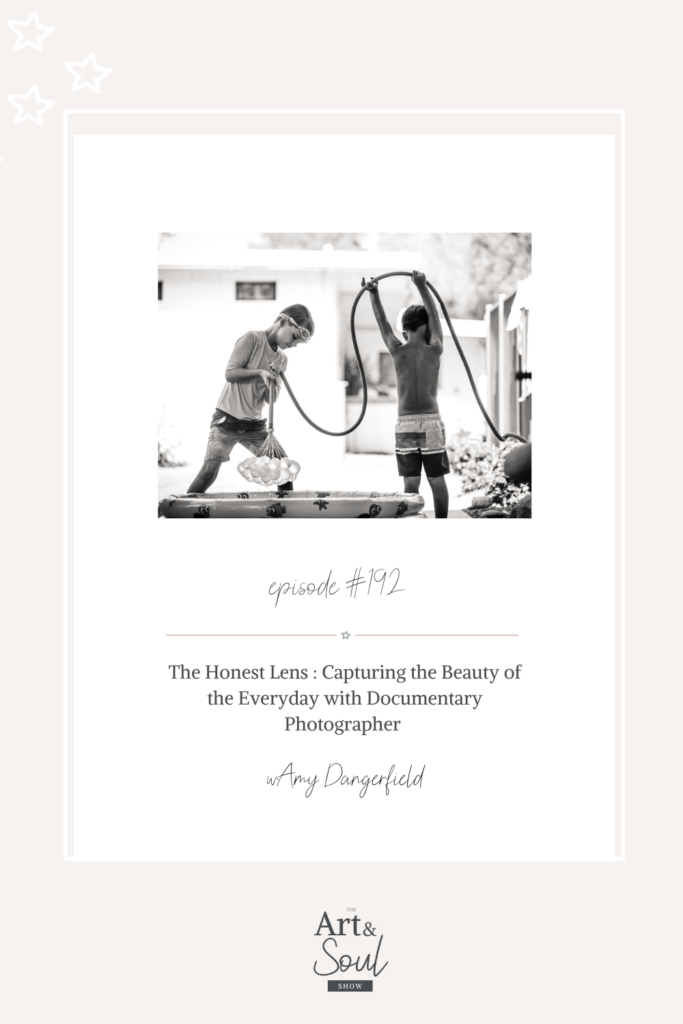
In today’s episode, I’m interviewing Amy Dangerfield, a documentary, lifestyle, and commercial photographer for newborns and families. Amy shares why she fell in love with documentary photography, her different approaches to lifestyle vs. documentary photos, and her advice on how photographers can find their authentic voice. Remember that real life is messy AND beautiful.
Amy also shares how a trip to visit family in China impacted her vision and her photography and cemented her intention to document real life as-is.
What’s in this episode:
- [04:27] Amy explains the significance of documentary photography and why she fell in love with it, and how it differs from lifestyle photography
- [06:41] How personality comes into play when creating your work, and how Amy’s photography and business changed after returning from China
- [15:39] Amy’s approach to newborn and family photography in documentary style and lifestyle photos
- [19:11] Tips for dealing with unknown lighting situations for photos, especially on location shoots
- [23:24] How Amy prepares parents for documentary newborn sessions, and how her approach changes when documenting older children
- [28:17] How Amy chose her mission behind her photography, plus her advice for new photographers struggling to find their authentic voice
Tune in to this episode to find your true, artistic voice as a photographer.
SUBSCRIBE: Apple Podcasts | Spotify
Resources Mentioned
Amy is joining us to teach inside the 2024 Online Newborn Retreat with her class
Those are the days-Documenting New Parenthood the Honest Way
Meet Amy
Amy Dangerfield is an international, published, and award-winning documentary, lifestyle, and commercial photographer. Born and raised in China, Amy currently resides in Phoenix, Arizona, with her husband and four little ones. Amy loves a good real life story, the pretty, the ugly, and everything in between. Amy believes that through honest documentation of the lives we live in, we get to understand each other much better.
Connect with Amy
Amy’s Free Resources & Courses
Did this episode inspire you to find your true, artistic voice as a photographer? Check out this episode Finding your Artistic Voice with Fine Art Photographer Shannon Squires that offers you even more insight on finding alignment in your business!
Transcript
[00:00:00] Amy Dangerfield In the Chinese culture. Like, I don’t think I’ve ever said I love you or my mom to me out loud. But that photo, when I look at it, it’s just the most unconditional love I will ever feel. It’s shown in the most, most humble way. So that’s really the moment where I’m just like, Why did I not see this in the moment? And now I’m really dedicated to honor the real life and celebrate real life of my life right now. And also as the way to honor the real life that I ignored back in China.
[00:00:43] Lisa DiGeso Welcome to the Art and Soul Show where we dive into heart opening chats on photography, business, life and that messy in between. I’m your host, Lisa DiGeso, a mom, a photographer and entrepreneur, and I’ll be sharing honest conversations and advice for photographers with insight on mindset, entrepreneurship and creativity. The goal of this podcast is for you to be able to gain insights and strategies that will get you real results. Because let’s face it, having a photography business can be lonely, but it doesn’t have to be. This is the place you can go when you need a boost of encouragement, a kick in the pants and inspiration to pick up your camera. This is the Art and Soul Show. Hello, my beautiful friends. Welcome back to the show today. I’m super excited to dive into today’s conversation with Amy Dangerfield. Amy is an international published, an award winning documentary, Lifestyle and commercial photographer. Born and raised in China, Amy currently resides in Phoenix, Arizona, with her husband and four little ones. Amy loves a good real life story, the pretty, the ugly, and everything in between. Amy believes that through honest documentation of the lives we live in, we get to understand each other much better. Welcome, Amy. I’m so excited to chat with you today.
[00:02:03] Amy Dangerfield Hi. Thank you for having me here.
[00:02:05] Lisa DiGeso So tell us really who you are and what you’re really, really passionate about.
[00:02:10] Amy Dangerfield So I am Amy Dangerfield, and I was born and raised in China. I am a documentary family and commercial photographer. So I live in Phoenix, Arizona, with my four little kids. I’m also a homeschool mom trying to raise bilingual kids. So my life is kind of chaotic, right? So I grew up with my grandparents in the movie industry, a documentary film industry. My grandma, my mom’s mom is actually a movie like film editor. So I’ve always been in that world of seeing all different stories and experiencing different types of life and lifestyle. So like right now I am just really passionate or I can say like, I’m just always fascinated by real life, like what’s going on in front of me? Where do these people come from? Like, what made them who they are and just trying to find that human connection. And of course, as a photographer, I am really passionate about using my talent to tell that story, to share the story, and also giving those less represented groups their voice, if I can.
[00:03:22] Lisa DiGeso Yes, I love that so much. So as a child, were you like super into photography or film just like everyone else in your family?
[00:03:30] Amy Dangerfield So I’ve always had a camera around me. I think the first photo I took was when I was like four and I still have it of my parents. We’re visiting. And then of course, there was this giant trash can like in the middle of the frame. And my parents were in the corner. And I think I’ve I’ve come a long way since then, and I’ve always loved taking photos. But I started with actually more focusing on like landscape and nature, because before I had kids, I would travel a lot. And then that was my way of sharing what I experienced with the rest of the family. And then, you know, when I have kids and then kind of changed everything. Yeah.
[00:04:14] Lisa DiGeso So you actually were a photographer even before you had children, because usually you hear the story is like, I had my babies and then I picked up the camera. So you had the camera before the kid?
[00:04:24] Amy Dangerfield Yeah, for sure. Yes.
[00:04:25] Lisa DiGeso I love that. I love that. So for those that are really unfamiliar with documentary photography, how would you explain its significance to you and why you fell in love with it?
[00:04:36] Amy Dangerfield Yeah, So documentary. A lot of times I get this question a lot and I always go back to the definition. So if you go to the dictionary, you will see on her documentary it says preserve and present truth and facts. So, that’s the significance of it, right? There is a lot of power in honesty, and especially in this day and age, you know, with A.I. and all that, we question like, is this real? Right? And so with documentary, you get to tell people, yes, this is a true story. This happened. And then that is very powerful. And that’s what draws me in initially. And also as it’s just such a unique approach that really fits into my personality. I am an observer, like I love just people watching and trying to figure out again, I’m curious, I’m really curious. You see what’s going on and it just really fits into this genre that I am trying to figure out what the story is, what is unfolding in front of me.
[00:05:39] Lisa DiGeso I love that. Do you find for you, is there a difference between lifestyle photography and documentary photography have. What would you define it as for yourself?
[00:05:48] Amy Dangerfield Yes. So definitely there is a big difference. I think from a technical standpoint in documentary, we’re not supposed to change the scene, meaning I would not direct or pose. I would not even turn on or off light in people’s home versus in lifestyle. I get to actually pose people, direct them, and that is acceptable. And also with documentary, I walk into your real life as it is, right? So I’m not going to style them. As for lifestyle, I am trying to create that aesthetic. Everything looks great, so I will style my clients for lifestyle sessions. So these are the technical points, but a lot of times I say lifestyle is more about what life could be and documentary is what life is.
[00:06:38] Lisa DiGeso Oof. Good definition. I love that. I love that. It’s funny because I am a very like I’m a pose, pose, pose photographer like and it’s funny I love how you mentioned like personality and how it really comes into play with how you view your work and how you create your work. How did you kind of come to that discovery of that’s how you see the world and embrace that? Because for me personally, being a pose photographer has been something I have struggled with. I’ve tried to do lifestyle, I’ve tried documentary and I, I just shut up.
[00:07:14] Amy Dangerfield Yeah. So I had my camera before I had kids, right? But I started my business with lifestyle, so I did a lot of lifestyle sessions because it’s also a new thing that I’ve never done before. Like people sent Christmas cards out here in the United States, and I thought it was kind of cool and it was going well, and I was creating beautiful images for my clients, right? And of course I was using the tagline, really cheesy tagline, I am preserving your unique family story. And then I was just like, What story am I trying to tell exactly? Like, you know, most of my clients, when they go to these like, locations, it was their first time, then rarely dress up the way I style women and then we’re in the middle of nowhere. Like, literally we’re in Arizona, right, and trying to dance and twirl. And it just didn’t quite make sense.
[00:08:08] Lisa DiGeso Yeah.
[00:08:09] Amy Dangerfield And then for me, really, I just started to feel that even though I knew, like, this was not their day to day life, I still felt like, okay, if I am promoting this kind of lifestyle, I need to match it. I’m supposed to dress up my kids, you know, a little nicer instead of, you know, totally dependent on the hand-me-downs. And then I probably should take my kids out, like, for more adventures. But I have four kids, and we’re homeschooling and I’m running a business, right? It’s just, life is not like that. And then so deep down, I start to feel like I was not a good mom and I was not doing enough. I was not fun and our life is not good enough. So that was like taking a really big toll on me in the first place. But I thought, you know, I found myself a solution. I decided that you know what? I’m going to be this fun mom and scheduled a family vacation to go back to China and visit my family for Chinese New Year. Essentially, I scheduled myself a six week long lifestyle session. I came up with a gigantic shot list, you know, like my grandma holding my little baby and trying to take photos of their hands. And, you know, I coordinated outfits. We’re going to go see the giant panda. And then I even got my kids like panda hat and all that. Right? But guess what? When I scheduled the vacation, we decided to go in 2020. Oh, no. And I am from Wuhan. That is where COVID started. Yes. So we went we landed on January 17th and five days later, the entire city, we have 9 million people went into lockdown. So nothing happened. Right after that. We were stuck at home. None of my photos were done. And now looking back, it was just so silly. But I was so mad. Not because of the pandemic, but it’s more like, come on, like I was supposed to make all these images and now I don’t get to do anything. And then I just thought like, Well, there goes my likes and followers and my business. And then all of a sudden now for four weeks, we’re going to stay for six weeks. And after four weeks, we got notification that we’re going to get evacuated out of the epicenter. And there we were and we were boarded in this cargo plane that was retrofitted with seats. And so that’s when reality just hit me, because until this day, I still haven’t been able to go back to visit. Yeah, but yeah, I was not able to create any of those like fancy images. But at the same time, I also lost the opportunity to really document what it was like to spend time with family, which was the whole point of us going. Right. Yeah. And I was just so hung up with this idea that life should be in this way and it was not. And then I just could not get out of it. Yeah. And then afterwards I was still taking photos throughout the whole process because I was committed to this through six five project. But I was not looking at any of the photos because I didn’t think any of those were good in comparison to what I had envisioned. But after we were evacuated, I started to really, like, frantically go through all the photos because that’s what I had left to hold on to.
[00:11:45] Lisa DiGeso Yeah.
[00:11:46] Amy Dangerfield And then I came across this photo that I took of my mom cooking. And if you look at that photo, I’ve shared it before. If you look at our photos, the furthest thing from anything that you will say pretty is this tiny kitchen. With all the clutter that she has collected over the years. And she was not dressed up in any way, but she was cooking. I took the photo initially because I felt spoiled that she was cooking and usually I’m the one cooking, right? And then my mom cooked, the seven of us. So we had five people and adding my parents. So the seven of us, three meals a day every day for four weeks straight, every meal was a feast. So I took a picture just to remember it. And then after we were settled in the quarantine camp and then we’re a Facetiming our parents and my mom started to say, Oh, you know what you’re eating? It’s so yummy. I’m like, We’re in a military camp. And then so they told us that they start to have to count how many eggs they could eat each day. So they don’t run out of food because they can’t just go out freely to get food anymore. And they would make comments that, oh, yeah, you guys took all the snacks for the plane rides. So I realized that my mom literally drained her food storage just so we could have a somewhat normal Chinese New Year celebration. And that was her way of showing her love. And in the Chinese culture, like, I don’t think I’ve ever said I love you or my mom to me, like, out loud. But that photo, when I look at it, it’s just the most unconditional love I will ever feel. In the most, most humble way.
[00:13:38] Lisa DiGeso Yeah.
[00:13:39] Amy Dangerfield So that’s really the moment where I’m just like, Why did I not see this in the moment? And now I’m really dedicated to honor the real life and celebrate real life. Yeah, of my life right now. And also as the way to honor the real life that I ignored back in China.
[00:14:02] Lisa DiGeso Oh, that is the most beautiful story. Wow. I am like, I’ve got tears right face right now.
[00:14:08] Amy Dangerfield Thank you.
[00:14:10] Lisa DiGeso Wow.
[00:14:10] Amy Dangerfield I’ve told that story multiple times. So finally, I’ve gotten to the point that I’m not going to totally.
[00:14:16] Lisa DiGeso Crying doing it. That would change everything. I mean, even like the entire experience of not only that, but also, you know, going from the safety in the comfort of your mom’s home to being in this military camp. Yeah. And just realizing that like, wow, they were she was going through all their storage just for you. I’m like, Yeah, that is so beautiful. So when you came back, how did that change your business and how you looked at your own photography?
[00:14:42] Amy Dangerfield So I have always taken photos for my own life, but I just never shared it because I didn’t think they were good enough for the grid. And then I started to share them. And people love them because I think especially after the pandemic, everybody just craves for that real connection. Everybody wants you to feel connected. So we actually got really good at response. And also just the fact that I share some of the stories along the way of our trip to China and our evacuation and all that. So people are following me for the story and they curious. And then after that, I just kind of built on that like, hey, you know what? This is my story and I’ve made mistakes, so please don’t make the same mistake again in your life.
[00:15:38] Lisa DiGeso I love that. I love that. Now you have niched into newborn and family in a documentary style way. Now, can you share a little bit about your approach when you are working with a family this way versus like maybe a lifestyle? Or I mean, obviously Pose is very, very come to my studio and it’s very different.
[00:16:01] Amy Dangerfield Yeah. Yeah. So it is very different with documentary. I give it enough time because I do believe that whatever is gold is there. I just need to wait for it to happen, give it the space and time. So that’s one main difference I feel is that my sessions are a lot longer. I start with three hour going up because you really need that time for everybody to to be themselves 100%. And then I’m more like not exactly a fly on the wall just watching, but I’m very laid back and trying to think through the scenes like, okay, this is what’s going on, but what is really going on? Try to dig a little deeper as versus, you know, lifestyle LA Times to where on a time crunch like okay we got to get to that final results. So documentary is lot more about the process than the final result.
[00:17:04] Lisa DiGeso I love that. Do you find that you like I’m sure like you’ve developed a process that’s like over time, Do you find that your clients are pretty much relax and go with the flow? Or do you find that you have some that are just like waiting for that direction and you’re like, Hey, like, I’m just here to be a part of your life. And how do you how do you deal with that?
[00:17:25] Amy Dangerfield Yeah, So I think actually everybody at the very beginning of a photo session will feel a little awkward or uncomfortable. That’s just how it is. I’m not part of the family and I’m in their home, right? So there’s always that phase. But what I usually try to do is I try to meet the family and events maybe the day before if I can, without taking any photos, just go hang out with them, Chat especially with little kids. That helps a lot. And then they know, okay, this is the friend instead of photographer.
[00:17:59] Lisa DiGeso Yeah.
[00:17:59] Amy Dangerfield And then during the session I would just do my thing. And then eventually my clients were just like, okay, she’s just doing her thing.
[00:18:09] Lisa DiGeso I love that. So what would you say your average shooting as far as number of images for a session?
[00:18:15] Amy Dangerfield So I shoot a lot, but I deliver only the best out of it. When I take photos, it’s also a little different because I cannot direct them. So when I see a moment happen, I will shoot through the entire thing, which means I will have a lot of frames because, you know, maybe one person will close their eyes, but the next frame will be great. So that way I can get that safety net. But I’m not constantly chasing after a moment. So I will be shooting and then I’ll wait and observe and see what’s going on and then move on to the next story, a mini story within the bigger story, and then shoot through the moment. And then so I just cull through each segment essentially and pick the best out of it. It depends on the lengths. If I am doing like a three hour session versus like a ten day full day, and then the final image will be a lot different too.
[00:19:11] Lisa DiGeso Very cool. Now my first thing is like whenever I’ve been I’ve literally done two on location sessions and the lighting situation stressed me out so badly. I said to myself, Never again. So tell me how you get away from that lighting fear of the unknown. I mean, obviously you’re going and you’re meeting with them the day before, but yeah, that’s probably like my biggest fear is like the light.
[00:19:38] Amy Dangerfield Yeah, I hear you. So many people are like, Oh my gosh, they have lights on in their home. All right. So when like, when I look at the entire approach again, we’re not looking to create something just for the aesthetics, right? So when we take that out, there are things that are just not going to be pretty and you just let that go. And then, of course, light is light. You just need to know how to use it.
[00:20:10] Lisa DiGeso Yeah.
[00:20:11] Amy Dangerfield Like you do studio sessions, right? So you know how to set up key like, you know, like all of that, like kicker light. But yeah, you can still use that in real life. You just have to find that. For example, yeah, like if you have a window, like, right from one room, but the other room had an overhead light on somehow, if you angle yourself or your subjects, you can actually use that like quote unquote ugly light as the kicker light. Yeah. And then light is light, right. So you can still work with it. And then a lot of times, I look at it from a storytelling standpoint. So is this a story that happened at night? Then I cannot make it to look like it’s golden hour. It needs to be a lowlight. It needs to make sense. And then if it’s a very calm story, then the yellow warm light actually how it works. Right. So it’s a different approach. And then you will be able to let go of a lot of control and just think, how do I work with the light instead of against it? So if you do have like an orange light, don’t try to make a really story that like the emotion is so cool and tense, right? But if it’s like a tender moment, then great. Just work with it.
[00:21:26] Lisa DiGeso I love that. I think what I’m hearing, too, is being less hard on yourself. Like, yeah, when you walk into it, instead of being like, all these are all like 85 rules of like, how to be a perfect photographer that I have to follow in order to get a perfect image. And you’re like, No, I’m just here to show the truth and be honest about it through my lens.
[00:21:47] Amy Dangerfield Yeah, and it makes more sense for the clients anyways, because they’re like, Well, this room, all they feel when they’re in the room, they will feel this warm light. Then if you make the image to tone it like correctly with white balance, then they will feel like, No, that’s not the house I live in. Yeah. Right.
[00:22:05] Lisa DiGeso So now do you find you ever have clients that are apologizing for their home not being that Instagram picture? Perfect. And how do you deal with that?
[00:22:14] Amy Dangerfield Oh, totally. Like, every time, like I walk into someone’s home, like, they clearly had cleaned up a lot of it. Like, most of these people do that. I’ve had clients, like, clearly, like, especially with newborns, they just literally had no time to clean anything. But a lot of times they’ve cleaned some and they still apologize, like, I’m so sorry. Like, our house is a mess. And I’m like, It’s okay. Like, I assure them that it’s okay. This image is for you to start with. Yeah. Like, I am not trying to, you know, like, make this image and put it on billboards. It’s for you. And then that helps them to feel a little better. And also, I showed them my previous sessions, how other people’s life is like. And then so they don’t feel as pressured to, like, keep up with that standard of Instagram worthy.
[00:23:05] Lisa DiGeso That would be the coolest series is like if you just did like everyone’s house is a mess and like just did like messy house series. This is it.
[00:23:15] Amy Dangerfield Yeah, literally. I think that’s so fun. I would. Maybe I’ll pull together a collection of that.
[00:23:22] Lisa DiGeso They are so good. I love this. So how do you prepare the parents for a documentary newborn shoot, especially if they are coming from maybe a previous session where they had traditional newborn photography?
[00:23:34] Amy Dangerfield Yeah. So I make sure to get on a phone call with them when they send in an inquiry to make sure that we have the same expectation. And during that phone call, one thing I make sure to talk about is my mission, why I’m doing what I’m doing. Instead of approaching the session as just the photo shoots, I tell them what story I’m trying to tell for them, what they can get out of this beyond a picture that is pretty that they can hang up on the wall that will get updated every year. Right. I’m creating legacy. I’m creating this core memory for the family. And then that will definitely help them to get on board. Yeah. And I literally have moms just cheering up, hearing me explaining my mission, especially, you know, moms with newborns and then, yeah, with all the emotions. Right. And then I make sure to share with them my other photos as well so they know exactly what they’re getting into. As long as we’re on the same page, the communication is there. We’re good.
[00:24:42] Lisa DiGeso I love that. Now, what about because, I mean, the biggest fear, I think, for like pose newborn photographers is that toddler that won’t cooperate. Now, when you have that kind of situation where you have maybe like a, you know, a silly toddler or one that’s just not having it. Do you embrace that and like just make that part of the session?
[00:25:01] Amy Dangerfield Oh, yeah. Because I love it. It’s part of the story, right? We’re telling a story. This is a part of it. And also, like a lot of times, moms actually love those moments more. It’s like, Yeah, this is what happens. Like, right? So you always see those like Instagram versus real life. And how about Instagram is real where like we just show the real life, right? So I totally embrace that. I shoot through the entire thing, the tantrums, the crying and and the discipline I see. Like, you will see a lot of finger pointing in my like, yeah, that’s a universal gesture. Like, I have a lot of photo of that. And then so to me there’s no like. A toddler who’s not cooperative because I’m not trying to create image to fit into my narratives, it’s just whatever is there. I am documenting it. I am trying to present it in the more artistic way.
[00:25:56] Lisa DiGeso Yeah. Mm. I love that. It’s just artistic honesty versus like a prefab narrative that may not be authentic. Yeah, I love that. Some of that. So do you do you approach change when you’re documenting older children? Like doing like a family session versus like a newborn session? And if so, how?
[00:26:16] Amy Dangerfield Yeah. So with newborn, obviously the spotlight will be on the newborn. Not that I don’t care about older kids, but like, literally with newborn, the next week they will look different and they will start to do different things. So if I was hired to do a newborn session, I will focus on the newborn and all the story will like unfolds around that newborn. Essentially, the baby is the main character. It’s the number one in the story. So if I am just documenting a family story, then I give everybody equal time and space. Even the parents, the grandparents. I’ll focus on those two rather than just following along the newborn a little better.
[00:27:01] Lisa DiGeso I love that. Do you get requests for doing sort of like themed things like, say, like making pancake breakfast or cookies or and just like documenting at.
[00:27:10] Amy Dangerfield Yeah, I do. I love those kind of sessions because when there is something going on, people feel more comfortable just being themselves. So a lot of times when it comes to family sessions, I do like I actually tell the family in advance like, Hey, if you have any special like family traditions, do it by all means. Because, you know, I would love to document that tradition, but don’t do something just for the sake of photos. If someone come to me and say, Hey, we’re doing this crazy thing that we never do. And I thought, it’s just fun for photos. And I’ll just say, you know what is not the best fit? I can refer you to someone else.
[00:27:54] Lisa DiGeso I love that. And I think that’s so important is being honest with yourself and being true to what you want to capture. And I think you mentioned having a mission. And by knowing what your mission is, it makes the yeses so much easier and the no so much easier, too, because if it doesn’t fit, that’s okay. You can pass it on. That’s awesome. That’s awesome. So how did you come up with your mission and how did you know it was your mission?
[00:28:21] Amy Dangerfield Yeah. So really also, it’s just out of curiosity. I really want to know, like, how other people are living their lives. Because as a mom myself and also my oldest, she has a spinal bifida. So when I was pregnant with her, we’re living in China, and I had no idea what life is like with spinal bifida. And so I went online trying to find, you know, communities you see, like what is like, Yeah. And we found one photo of this little kid, not even a girl, just a little kid sitting in the wheelchair playing wheelchair basketball. So that was all I had in my mind. That was what life was going to be for my daughter. But if you look at her, it’s so different. So I have really been spending a lot of time trying to help myself just to understand, like, okay, when I have a struggle, how are other moms dealing with this? Can I learn from others? Am I alone? Like, can I can’t be the only one? Maybe I need a visual to remind myself. And then the more I do it, the more I realize that every mom has the same struggle, always asking, I can’t be the only one. Like, I wonder what other people are doing, right? So that’s what my mission is really just to present it, like almost through the massiveness of the images that we could create by telling individual stories. And then like collaboratively, we can just understand what we’re going through as a society right now.
[00:30:04] Lisa DiGeso Yeah, beautiful. I love that so much. So what advice would you give to new photographers who might be struggling to actually find their authentic voice in this age of filters and curated feed?
[00:30:18] Amy Dangerfield My number one suggestion is to get off social media. If you don’t see it, you’re not going to try to fit into that. Right. I know it sounds more like a joking way, but it’s actually so true. The more you live in real life, the more you will be able to be in tune with what’s within because it’s just so noisy out there, especially on social media. Like every second there is the notification coming in and you’re just distracted. So definitely get off social media. Like not saying indefinitely. Like social media is still a great tool, but use that as a tool, not use it as inspiration, almost like find inspiration from within and then take the time. It does take time to develop your artistic voice. Initially, we all start with mimicking and copying others, but you got to start to do something with your own stuff, like experiment with it. What if I don’t do that? What would happen? What if I shake my camera? Right? Not get that crisp focus. And then see what you’re drawn to and then try to create your own artistic portfolio instead of only like relying on social media. Have a different platform, maybe website, or even print your photos and lay them all on the floor and see if you can find a pattern, what you’re drawn to, what your strengths are, and what your weaknesses are.
[00:31:53] Lisa DiGeso Yeah, I know. For me I’ve gone through a bit of a transition over the past. I guess it’s been the past seven years really, because my son was my muse and he hit an age where he didn’t want to be photographed anymore. And even when I would have the camera because I was a posed photographers, so it was like, sit, do this very instructional. So it wasn’t overly fun for the guy. Like, I absolutely admit that now. And so now he’s just like, whenever he sees the camera, he’s like, does not want to be part of it. Doesn’t want me even taking any lifestyle or documentary anything. So it’s just been interesting because he was my reason for doing photography and just kind of how I had to come to terms with like that’s changed now and yeah, okay, things are going to change, they’re going to evolve. You’re going to evolve as an artist. And so I’ve been in sort of in this place of like figuring out what my new mission is, and it’s taking me a little longer than I thought. Yeah, I’ll get there, I hope.
[00:32:50] Amy Dangerfield Yeah, yeah. That is actually a good point. I’m glad you mentioned that because a lot of times go through this as well. Like what happens when your kids are grown up, they will leave you like so it will eventually happen. Maybe you’ll get to photograph grandchildren. But like, you know, there is always going to be that space that you will feel like, okay, now what? What’s next? Right? So I am playing with all different kind of stuff. Documentary is mostly for my personal projects from my client work, but I do all kinds of crazy stuff.
[00:33:25] Lisa DiGeso I love that because I think it’s so important is reminding yourself to play and stuff like you don’t have to show everything that you put out there and or everything that you create, right? Because when we forget to play, we put that perfection mask on. It is such a hindrance to actually just being creative.
[00:33:46] Amy Dangerfield Yeah. And also like you mentioned, like you don’t have to put it out there. You don’t have to show anyone what you’ve created. And right now, like with the social media culture, like you hear so often, oh, so like you should post you days like a week, how many times a day even, right? And then so everybody’s under this like pressure that we have to get out content just like that. Right? But that’s not how it is with art. Art takes time. And then like if you look back some of the famous like photographers, it takes them like decades to come up with like one series of maybe like ten photos, right? So why are we supposed to create like essentially 365 images a year? That’s award winning worthy, Right? So I just play.
[00:34:39] Lisa DiGeso If you think of like, like the Dutch masters and like all the paintings and how long it took them to create their pieces of art, and they’re like, can you imagine if they were like, in the digital age where they had to be like, boom, boom, boom, Like, we can’t do, we can’t like, why are we putting this piece on ourselves? Yeah, it’s so silly.
[00:34:57] Amy Dangerfield Yeah.
[00:34:58] Lisa DiGeso You’re never behind. Right? Yeah. We put way too much pressure on ourselves. And like you said earlier about being enough, right? Like, what is enough? What is enough content. What is like, Yeah, what is enough? Right now the answer is you are. You’re enough.
[00:35:14] Amy Dangerfield Yeah.
[00:35:15] Lisa DiGeso Just do what you want to do that makes you feel good.
[00:35:18] Amy Dangerfield Yeah. Like, literally, I just read this the other day about homeschooling, educating kids. This author mentioned that what if you just believe that your child right now is perfect? Mhm. And that really hit me because I don’t think I ever believe that I am perfect. At any moment. Like I was always taught, like you cannot be prideful. You have to try and be better. But if you think about it, it’s such an empowering, freeing thing if I can just believe I am perfect right now.
[00:35:56] Lisa DiGeso I love that. And everything. Everything I put out is art. Everything I make is art now. And if you just look at that like everything is awesome.
[00:36:05] Amy Dangerfield Yeah.
[00:36:06] Lisa DiGeso I know. I love that. So I’m going to switch just into our lightning round. You ready? Okay. What’s for dinner tonight?
[00:36:15] Amy Dangerfield Burritos.
[00:36:18] Lisa DiGeso Good one. That’s my son’s favorite. Go to song that lifts you up when you’re down?
[00:36:23] Amy Dangerfield Taylor Swift.
[00:36:26] Lisa DiGeso Oceans or mountains, and why?
[00:36:30] Amy Dangerfield Oceans. I love water. Everything water.
[00:36:33] Lisa DiGeso Love that. What’s your favorite comfort food?
[00:36:37] Amy Dangerfield Boba.
[00:36:39] Lisa DiGeso I had boba for the first time two weeks ago.
[00:36:44] Amy Dangerfield Oh, really? What did you think?
[00:36:45] Lisa DiGeso It was good. I had, like, a strawberry one. And then my son had a coconut one, and they were so good.
[00:36:52] Amy Dangerfield Yeah, I love them. I love them a little too much.
[00:36:58] Lisa DiGeso What did you want to be when you grew up? When you were a kid?
[00:37:01] Amy Dangerfield A teacher. I grew up in a teacher family.
[00:37:05] Lisa DiGeso What is something you’ve accomplished as an adult that your younger self would be proud?
[00:37:10] Amy Dangerfield I’m actually kind of like a rebel right now. I think my younger self would be proud of me for that.
[00:37:16] Lisa DiGeso I like it. Where do you feel the most centered and happy?
[00:37:20] Amy Dangerfield Out in nature.
[00:37:23] Lisa DiGeso What makes your soul up?
[00:37:25] Amy Dangerfield A good story. A good, touching story.
[00:37:30] Lisa DiGeso What do you wish more photographers knew?
[00:37:33] Amy Dangerfield Oh, this is a good one. Take your time. You don’t have to rush.
[00:37:40] Lisa DiGeso What has been the best piece of business advice you’ve ever been given?
[00:37:44] Amy Dangerfield Know your numbers. Numbers don’t lie.
[00:37:47] Lisa DiGeso What advice do you have for someone just starting out?
[00:37:50] Amy Dangerfield Hold on to your why. And your why might change, but hold onto it for as long as you can.
[00:37:57] Lisa DiGeso So where can our listeners learn more from you?
[00:38:00] Amy Dangerfield So I am on my website, mostly in my email list. And then also I am on social media on my Instagram with amydangerfieldphotography.
[00:38:11] Lisa DiGeso And Amy is actually coming to teach with us for the online newborn retreat. So can you share a little bit what you’re going to be teaching on?
[00:38:20] Amy Dangerfield Yes, I am so excited to teach that class. So I am teaching a documentary starter kit for anyone who wants to start to get in the field and start making a documentary newborn photos. So I will actually walk you through what is a documentary and what are the restrictions, how you can be free from all those technical restrictions, how to find the deeper story beyond the aesthetics that holds deeper meaning. And I will bring you with me to behind the scenes to show you how exactly I work with the lighting, how I find the spot, how I get a clean frame, and how to be creative when it comes to documentary sessions to go beyond what it looks like and try to hit that what it feels like. And also I will share my editing thoughts as well.
[00:39:12] Lisa DiGeso I love that. We are so excited and so honored to have you come and join us as a teacher. So I cannot wait to share this with our students. So I love to end my interviews just with this last question. And it is what are you currently curious about or artistically curious about?
[00:39:30] Amy Dangerfield So I am actually curious about identity. I grew up in China and now I live in the United States. I’m now a U.S. citizen and we’re raising kids in multiple languages and cultures. So I am trying to figure out what identity means for me and for my children and how I can translate that visually through photos.
[00:39:55] Lisa DiGeso I love that. Oh, beautiful. Well, Amy, thank you so much for joining me today. It has been an absolute pleasure chatting with you.
[00:40:03] Amy Dangerfield Thank you for having me.
[00:40:05] Lisa DiGeso Oh, my beautiful friends, I hope you have loved this conversation just as much as I have. I am sending you so much of my light and my love today and every single day. We’ll see you next time. Hey, friend. You know what the worst is? Just being mid-session and completely freezing. You start to feel awkward, your clients start looking at you for direction, and your brain feels like you’ve just hit a wall. Now, believe me, you are not alone. And that’s why we created The Storyteller Toolkit. It’s an emotive prompt guide to help sessions stay free flowing and fun. And best of all right now, it’s totally free. It’s full of prompts for parents, motherhood, family, siblings and couples, and even a sure fire smile prompt. We’ve put together over 200 prompts for you, but you’ll never be at loss for an idea again. Grab your copy at themilkyway.ca/toolkit.
share the love
[Sassy_Social_Share]
recent
Podcasts
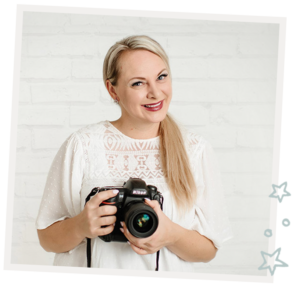
I'm
Lisa DiGeso
I’m on a mission to create uplifting online experiences for photographers ready to elevate their art, their business and their mindset.(...and have fun along the way!)

